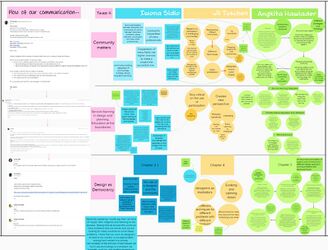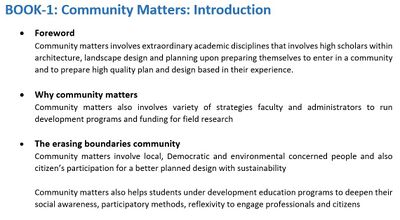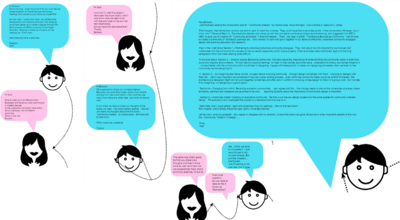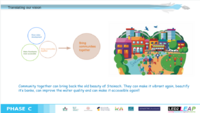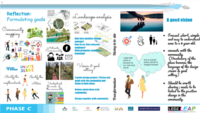LED2LEAP 2021 - Nürtingen Team 5
>>>back to working groups overview
For help with editing this Wiki page use this link.
For assignments and key readings use this link.
| Area | Steinach River Bank | |
| Place | Nürtingen | |
| Country | Germany | |
| Topics | Making Steinach River accessible to the community | |
| Author(s) | Angkita Hawlader, Yasif Alavi, Christian Barrera, Maximilian Stauch | |

| ||
Landscape Democracy Rationale
- insert text here
Location and Scope
- insert text here
Phase A: Mapping Your Community
Welcome to Your Community and Their Landscape
Groups of Actors and Stakeholders in Your Community
- insert text here
Relationships Between Your Actors and Groups
- insert text here
Summary of Your Learnings from the Transnational Discussion Panel
- insert text here
Theory Reflection
- insert text here
Reflection on theory 'Things that went well':We found the theory of working in PAR spiral very helpful where each step involves assumptions, experimentation, reflection and revised assumption -Starting each process with assumption helped us in moving forward with the mapping exercises since three members from our team are not in Nurtingen - Helped us in being creative in imagining what the people want. -Information about nurtingen was available online as well. Things that were difficult -Online research / working in group online was tiring. Not meeting in person with groups members is different and is taking more time during discussions. -Communicating and talking to people in person and over phone/ Internet is very different
References
- insert text here
Phase B: Democratic Landscape Analysis and Assessment
Angkita Hawlader , Iwona Sidlo and Jil Tuschen Correspondence
Maximilian Stauch and Lena Bartens Correspondence
Yasif Alavi and Barbara Bozsik Correspondence
Christian and Chayma Correspondence
Your Name and Partner's Name Correspondence
- ''insert text here''
Phase C: Collaborative Visioning and Goal Setting
The Scene in Your Story of Visioning
- The challenges of the community was to connect better with the Steinach river . The problems foreseen are climate change, Social disconnection and growing urban area. Our main goal is to connect the community with the river and increase biodiversity at the same time.
The Actors in Your Story of Visioning
- The actors involved with the steinach river are :
1. Unsere Braike ( local community ) 2. Florists 3. Landscape Architects 4.Industry owners
The Story of Visioning
- We start with community mapping , identifying the stakeholders, activate the stakeholders by contacting them through emails, facebook groups and sharing postures regarding our project area. We then listen to their needs and document their voices through illustrations which shows the steinach river in them. We then categories the needs in to thre major goals which are : 1.River sides development 2.Make Riverbanks more accessible 3. Bring communities together.
We then move towards formulating action plans for the goals identified. We then identify the resources needed for our action plan . We work on a three year action plan and also note the tangible indicators of success for year .
Reflect on Your Story of Visioning
- The steps to formulating goals include, community mapping, stakeholder identification , landscape analysis and then engaging with the community . Basic questions to keep in mind when discussing design project , its goals and visions with the community would be :
1. How does positive change emerge? 2.How do we find coherent solutions? 3.What promotes innovative planning?
The characteristics of a good vision would be : 1.Focused ,short, simple and easy to understand even to a 9 year old. 2.Connects with the community. (Vocabulary of the place becomes the language of the design ,vision & goal setting) 3.Should be worth sharing ; needs to be linked to the positive change in the community.
Phase D: Collaborative Design, Transformation and Planning
Your Prototyping Action
- insert text here
The Evolution of Your Prototyping Action
- insert text here
The Plan Behind Your Prototyping Action
- insert text here
The Realization of Your Prototyping Action
- insert text here
Reflect on Your Prototyping Action
- insert text here
Phase E: Collaborative Evaluation and Future Agendas
Collaborative Evaluation and Landscape Democracy Reflection
- insert text here
The Actors in your Collaborative Evaluation
- insert text here
Reflection on the Online Seminar
- insert text here
Reflection on the Living Lab Process
- insert text here
Your Living Lab Code of Conduct
- insert text here
Process Reflection
- insert text here









